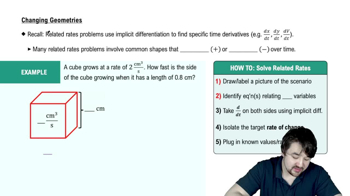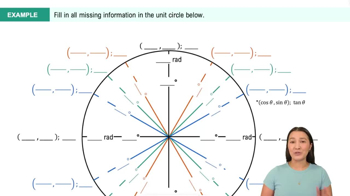Solving equations Solve each equation.
sin² 2Θ = 1/2, -π/2 ≤ Θ ≤ π/2
 Verified step by step guidance
Verified step by step guidance Verified video answer for a similar problem:
Verified video answer for a similar problem:



 5:4m
5:4mMaster Converting between Degrees & Radians with a bite sized video explanation from Patrick
Start learning